1.01 Denver Devils — RB Reggie Bush |
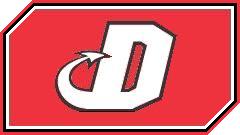 |
| Many have compared Bush to Hall of Famer Gale Sayers, and there hasn't been a running back this electrifying in the NFL Draft since Barry Sanders (1989). What's he done? The appropriate question is, what hasn't he done? One is that he didn't have the chance to be an every-down back at USC. Stewart Mandel of SI.com said after the Rose Bowl: "A fast defense may be able to neutralize his speed, and he's never going to be the physical type that wears down opponents." Then again, Barry Sanders wasn't the physical type, either, but he left opposing defenses thunderstruck on many occasions. For Denver, Bush is not just the best player on the board—he's also a long-term replacement for Corey Dillon. |
1.02 Pittsburgh Big Papas — RB Laurence Maroney |
 |
| The Big Papas missed the playoffs last year in part because RB Jamal Lewis just wasn't the same after his prison term. To that end, they have picked up a back with great speed, especially for a tackle-breaking downhill runner, and a few 200-yard games have raised more than a few eyebrows. But as with Marion Barber III last year, I still hesitate and ask myself, what really did it—is he really that talented, or is he a product of the Minnesota system? Maroney's backups (Gary Russell and Amir Pinnix) did well behind that O-line, with both averaging 6 yards per carry. Still, Barber has already had some success in the NFL with the Cowboys, and Maroney is generally considered a better back than Barber. His job situation is a very good one, as he'll have the Patriots' RB job all to himself by this time next year. Pittsburgh got this pick from Houston in a 2004 trade that also saw them acquire WR Rod Smith. Note 5-26-06: ESPN.com analyst Bob Davie, a former Notre Dame head coach, writes that no college team is better at zone blocking than Minnesota. That's more ammo for the "product of the system" camp. |
1.03 Chicago Blaze — RB DeAngelo Williams |
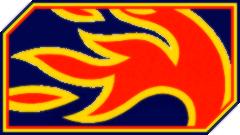 |
| Chicago, the team with the league's worst rushing game last year, is the first NFC team to pick in this year's draft. They're also the first team with a losing record to pick in this year's draft (Denver and Pitt had 7-7 records). If not for a broken leg in the 2004 GMAC Bowl, Williams might have come out a year early. Then again, he went much higher in this year's draft than he would have gone last year, so that injury might have been a blessing in disguise. Williams has speed and receiving ability and, according to Richard Cirminello of collegefootballnews.com, comes from a similar mold to LaDainian Tomlinson. "He's multidimensional and he's creative," said Mel Kiper on ESPN Radio a few months back. Todd McShay of ESPN.com says Williams' running style is similar to Carnell "Cadillac" Williams: He runs low to the ground, changes directions quickly and causes the first defender to miss. |
1.04 Carolina Convicts — QB Vince Young |
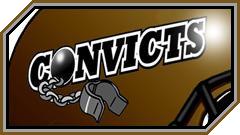 |
| The TUFF Shit Bowl champs need a new QB, and in fact, have needed one since Jeff Garcia left the San Francisco 49ers. Enter Vince Young. This dangerous scrambler dismantled the Michigan defense in the 2005 Rose Bowl, then conquered the mighty USC Trojans with 200 rushing yards and 267 passing yards to win a national title for Texas, in two of the greatest individual performances in college football history. Mel Kiper says the only thing he needs to work on is dropping back 5-7 steps, setting up, and throwing the football under pressure. Young worked mostly out of the shotgun formation and will need to adapt to taking snaps under center in the NFL. Stewart Mandel of Si.com says: "Young is a better passer than Michael Vick and, while Vick might be a tad faster, Young is a 'smart' fast—he's dangerous but not reckless. He's also the most endearing leader I've ever covered—you could tell the entire Texas team marched to Young's beat." NFL.com says to expect to wait 2-3 seasons before we find out if Young is a fantasy stud. |
1.05 New Orleans Peeping Toms — RB Joseph Addai |
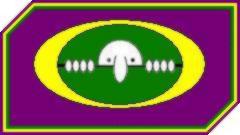 |
| This team is looking for depth just about everywhere after dealing away Terrell Owens and a draft pick for two aging veterans with next to no future (Kerry Collins, Stephen Davis). Like Julius Jones two years ago, Addai needed a big season to raise his NFL draft stock. A season-ending knee injury to Alley Broussard was just the break he needed. I'll quote Scouts, Inc. for this one: "When healthy early in the season, Addai capitalized on the opportunity with 642 rushing yards in the first six games... However, a lingering ankle sprain slowed him during LSU's final six regular-season games, when he rushed for just 139 combined yards. Addai is a decisive, slippery runner with excellent timed speed and impressive overall versatility as a receiver and blocker." He ran a 4.40 in the 40-yard dash at the Combine, and that helped vault him into Round 1 of the NFL Draft. But durability is still an issue. He already has a torn ACL in 2001 in addition to last year's ankle sprain. You can say Addai's job situation is better than Williams', but then, my good friend Jeff Rathburn made the same mistake in thinking Tatum Bell was a better pick than Stephen Jackson or Kevin Jones due to Denver supposedly providing a better job situation. On the other hand, Colts GM Bill Polian has struck it rich with running backs before—Thurman Thomas when he was the Buffalo Bills' GM; Edgerrin James in 1999—and Tommy Hartdegen hopes he's done it again. New Orleans wrested this pick from Minnesota in a blockbuster trade that also involved RBs LaDainian Tomlinson, Domanick Davis and Cadillac Williams. |
1.06 Arizona Outlaws — RB LenDale White
 |
|
| Until recently, this team was in a great position to take a great replacement for aging Brett Favre, Matt Leinart. But the suspension of Ricky Bastard Williams and the denial of reinstatement meant that Jeff Zamzow had to get another running back, lest he resort to asking TUFF Commissioner Todd Hansen to allow the use of CFL running backs. And White's not a bad choice. He had back-to-back 1,000 yard seasons and reached paydirt a school-record 57 times despite having to compete with Reggie Bush for touches. Sporting News magazine's Matt Hayes went so far as to hail White as the best player available in the draft: "White will be a 25-carry back, a bulldozer of a runner with deceptive speed and a knack for finding the end zone." The Tennessee Titans were among the league's weakest teams in terms of red-zone rushing, so they might turn to White for goal line carries. White had disappointed scouts by coming in out of shape and not running a 40-yard dash (it turned out that he had a torn hamstring). The hammy still didn't excuse the fact that he bench pressed 225 pounds 15 times, nine fewer than the much smaller Bush. But Hayes stands by his statement that White is the best back on the board. Also, according to Titans coach Jeff Fisher, an LA Daily News report that White failed a drug test during the Combine was incorrect. |
1.07 New Orleans Peeping Toms — QB Matt Leinart
 |
|
| What luck. The Toms needed a new QB, as Aaron Brooks has turned into the Rent-a-QB type (which he is—why the Saints didn't realize this a few years ago and trade for hometown boy Patrick Ramsey, I'll NEVER know), and son of a gun, the best player on the board at this point just happens to be handcuffed to New Orleans' other QB (Kurt Warner). Leinart would have been #1 overall pick in last year's NFL Draft if only his elbow had been healthy at that time. He's got one challenge he hasn't conquered yet: Proving that he makes his supporting cast better, not the other way around. He always had a great team to work with at USC. Stewart Mandel of SI.com compares him to Tom Brady: "Leinart is an unparalleled decision-maker who sees the entire field and, 99 times out of 100, makes the right read, even if it means dumping off to the fullback or tight end." |
1.08 Pittsburgh Big Papas — TE Vernon Davis
 |
|
| Tight end was one of Pittsburgh's biggest needs, as their best tight end is the aging Marcus Pollard. And Davis was not only the first tight end taken in the NFL Draft, but he went before any wide receiver was. "He lacks ideal size and has much room to improve as a blocker, but his overall combination of physical tools and playmaking savvy are hard to ignore," says Scouts Inc. But his speed (4.38 seconds in the 40-yard dash) is what put him ahead of the rightful #1 TE in this year's class (Marcedes Lewis). He also bench-pressed 225 pounds 33 times. This blend of size, speed and strength doubtless caused many NFL scouts' jaws to drop. Davis had a very productive junior season at Maryland (51-871-6), leading all ACC receivers. |
1.09 Indianapolis Hoosier Daddies — RB Maurice Drew
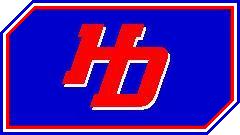 |
|
| Indy continues building its menagerie of non-every-down running backs with Drew, over such possibilities as TE Marcedes Lewis and QB Jay Cutler. According to Mel Kiper: "Drew will be an all-purpose player in the NFL, not a primary ball carrier. He has powerful legs and a low center of gravity. If a team already has a featured back, Drew could be a very good complementary performer." He ran a 4.37 in the 40-yard dash at the Combine. According to Pete Fiutak of collegefootballnews.com, Drew was a great clutch 4th quarter player last year. But I'll stand with Kiper on this one. |
1.10 Baltimore Brown Clowns — QB Jay Cutler
 |
|
| Cutler's poise and athleticism are reasons why Vanderbilt won a few more games than usual last year. (By the way, let's remember that John Elway, who won two Super Bowls with Cutler's new team, the Denver Broncos, also never got to go to a bowl game in college.) According to draftdaddy.com, Cutler has better arm strength and throwing mechanics than Matt Leinart. ESPN's Chris Mortenson gushed about him in the days leading up to the Senior Bowl: "Jay Cutler of Vanderbilt is the best quarterback available for the NFL draft come April." Of the 21 TD passes he threw last year, 12 came in his final three games (during which time he threw only two INTs). With this selection, Baltimore could well put Philip Rivers (2004 first-rounder) on the trading block. Their veterans, Drew Bledsoe and Jake Plummer, both exceeded expectations last year. |
1.11 Houston Tethered Swimmers — WR Chad Jackson
 |
|
| Give Jeff Rathburn credit for trying to turn around this team. Trades have brought him such players as Tatum Bell, Julius Jones, Charles Rogers, Braylon Edwards and Mark Clayton. Problem is, Rogers has got to stay off dope, Jones got hurt a lot last year, Edwards will miss at least some of 2006 due to a knee injury, and Bell isn't a full-time running back. That said, they took arguably the best available player, and one that could possibly fill in for Rogers and/or Edwards right now. Jackson has blazing speed (4.35 in the 40yd dash), but I would have liked for him to have a more solid track record at Florida, including at least one 1,000-yard season (he didn't have one). Overall, this isn't a great year for WRs, but three receivers stand out for me: Santonio Holmes (big play-making ability), Maurice Stovall (a great blend of size and playmaking ability) and Mike Hass (who has a great knack for getting open). (No, I don't mention those last two just because I picked them.) |
1.12 Tennessee Taz Devils — WR Santonio Holmes
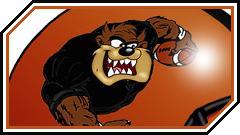 |
|
| Tennessee was in a fine position to address their biggest need: wide receiver (Isaac Bruce isn't getting any younger, and the Taz wideout corps, on the whole, was pathetic last year). And in my estimation, they got a better receiver than they expected. The Great Santonio always seemed to be around to make a crucial catch or big play for the Buckeyes, and I have wondered if it was Holmes that made Michael Jenkins look so good during 2003. That was the only season that Holmes (then a redshirt freshman) and Jenkins (then a senior) were on the field together, and I'm thinking Holmes drew enough coverage away from Jenkins that Jenkins had a great year. Jenkins wasn't so big before 2003, and hasn't been a standout on the Falcons since. Holmes may not be a big target, but he's no Smurf, either. He's more likely than Jenkins to follow in the line of recent successful Buckeye wideouts (Joey Galloway, Cris Carter, Terry Glenn, David Boston before he got hurt, et al.) |
1.13 Baltimore Brown Clowns — RB Jerious Norwood
 |
|
| Norwood's got the speed, and Gil Brandt of NFL.com says he'll do well in Atlanta's system. He's got a chance when you consider Warrick Dunn's on the wrong side of 30. But a closer look at Norwood's 2005 stats reveals that he got most of his yards against the worst the SEC had to offer (Kentucky, Vanderbilt), along with the usual non-conference creampuffs, while having trouble against the SEC's best (Georgia and LSU). Rob "Boomer" Rang, the senior draft analyst at NFLDraftScout.com and whose work has been published across the country, says: "Simply put, he doesn't break enough tackles." And that's why (unlike that mock draft that the Big Papas started on the message board) I would not have drafted him this early. Vernand Morency went at this spot a year ago—maybe in the future, the Falcons will trade for him. I would have opted for Marcedes Lewis, even though the Brown Clowns already have Alge Crumpler, just to solidify depth at tight end. Remember that speech that Chris Rock gave at the Academy Awards last year? "If you want DeAngelo Williams, and all you can get is Jerious Norwood... wait!" |
1.14 Cleveland Cellar Dwellers — WR Sinorice Moss
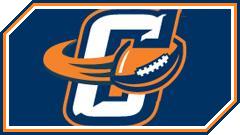 |
|
| The younger brother of fellow Miami alum Santana Moss, who has had excellent seasons in two of the last 3 years; his sub-4.4 speed further enhances his stock. But Scouts Inc. says he lacks ideal size and projects as a slot receiver. |
1.15 Tampa Bay Meat Goats — RB Brian Calhoun
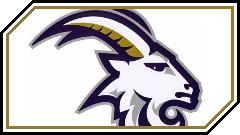 |
|
| I called this one: Tampa Bay takes Calhoun to handcuff to another Detroit Lions RB, Kevin Jones. He's fast and elusive, but once upon a time, so was fellow ex-Badger Michael Bennett. He's really had only one full season as an every-down back (he missed 2004 because he transferred from Colorado to Wisconsin). Stewart Mandel of SI.com on Calhoun: "Scouts concerned about his small frame (5'10", 194 pounds) should note he had games in which he carried the ball 43, 38, 35 (twice) and 30 times." Toward the end of the season, however, all that pounding took its toll on Calhoun; he rushed for less than 65 yards in three of his last four Big Ten games. Also, Calhoun ran a 4.62 in the 40 at the Combine, causing his draft stock to drop. But he did far better at a "pro day" workout, and in the worst case scenario, Calhoun will be an excellent 3rd-down back.
|
1.16 Denver Devils — TE Marcedes Lewis
 |
|
|
Denver dropped 9 spots in Round 2 in order to go up from 2.01 to 1.16 and get Lewis. Really aggressive, and considering that Lewis is the best player available at this point, why not? So he's slow. So what? At 6'6", 261 lb., he is "a mismatch waiting to happen," according to Allen Trieu, the man behind www.draftstock.com (formerly NFL Draft Showcase). "He has the size and the natural pass catching skills to be a top tight end in the NFL." Lewis should be ready to go by the next time Jeremy Shockey gets hurt. I like him better than Vernon Davis because he's more proven as an every-down tight end; Davis basically only had one season to Lewis' three. Also, Lewis' QB is the more proven Byron Leftwich.
|
2.01 San Diego Slewage — RB Jerome Harrison
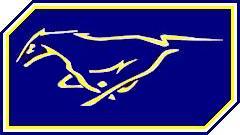 |
|
|
Harrison was a finalist for the Doak Walker Award in 2005, based on a great senior season (1900 yards on 308 carries with 16 TDs). Until last December, this juco transfer was WAY under even my radar, as I was too busy watching certain other backs. Scouts, Inc. says he is more likely to be a 3rd-down/special teams/quality backup like Chester Taylor of the Pittsburgh Big Papas. But Sporting News magazine spoke highly of his Senior Bowl performance - "Once he got the pads, he turned into an animal. He showed good cutback ability and a strong burst, reminding some scouts of Curtis Martin," and Martin was a Round 3 pick himself. Thing is, Harrison dropped to Round 5, and would have been a better fit with Green Bay at the next pick.
|
2.02 Green Bay Ground Hogs — TE Joe Klopfenstein
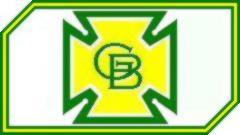 |
|
|
Klopfenstein was one of the top performers at the Senior Bowl, and that raised his stock a great deal. He could be a steal in a draft that is relatively rich in tight ends. Scott Linehan (the Rams' new head coach) looks to use the tight end a good deal—maybe not quite as much as he used Randy McMichael in Miami at first, but he'll use him. And the Rams haven't had a tight end this good in years. For the Ground Hogs, he'll be a solid backup for Tony Gonzalez now, then should be a starter by the time Gonzalez retires.
|
2.03 Minnesota Fats — TE Leonard Pope
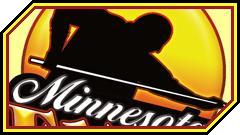 |
|
|
Tight end's been a trouble spot for Minnesota for a while now, and Pope should mean they won't have to dig through the free agent trash heap for a tight end for a long time. At 6'7", he's already one of the tallest targets around. Then add in a vertical leap of 37 1/2 inches (as seen at the Scouting Combine). Now add in his wingspan, and wow, that's one hell of a big target. SportsLine's Pete Prisco is concerned that he may be too tall to be an effective blocker, which would limit his playing time. One thing that turned me off about Pope is that, according to USA Today, he had a relatively high amount of costly penalties (false starts, holding) and needs to play with more control and alertness if he's going to be an every-down player in the NFL.
|
2.04 Carolina Convicts — RB Leon Washington
 |
|
|
Washington closed his junior season (2004) in stunning fashion, racking up 195 yards on just 12 carries against West Virginia in the Gator Bowl. But in 2005, he didn't pick up where he left off, as he only had 400 yards on 91 carries. It was especially disappointing considering how much his ypc avg had been improving in each of his previous two seasons. Gil Brandt of NFL.com points out that Washington entered 2005 much heavier. If the Jets can whip him back into his 2004 shape, they—and Carolina—have got a bargain. But you read it here first—the Jets will trade for Deuce McAllister next year. The Saints can't have two top-dollar RBs taking up so much salary cap room for so long.
|
2.05 Chicago Blaze — WR Maurice Stovall
 |
|
|
The 6'5" Stovall didn't make much of an impact at Notre Dame until Charlie Weis became the head coach of the Fighting Irish. In fact, Sporting News magazine said that Stovall and his QB, Brady Quinn, could thrive under Weis (July 1, 2005 issue, page 51). And thrive they did. Stovall finally broke out in the third week of 2005 against Michigan State; then, from there, he had five more games of 120+ receiving yards, including the Fiesta Bowl against Ohio State (whose secondary included a couple of NFL draftees). Scouts, Inc.: "Stovall has a terrific combination of size, speed and athletic ability. He shows the potential to develop into a matchup nightmare in the NFL, especially in the red zone." Let me put it this way: If Weis had been head coach at Notre Dame for the last three seasons, not just last year, Stovall would have gone in Round 1.
|
2.06 Baltimore Brown Clowns — RB P.J. Daniels
 |
|
|
Daniels had over 1,400 yards as a sophomore, but hasn't rushed for 1,000 yards in a season since then. Listed at 5'10" and 210 pounds, Daniels is a former walk-on that plays the game with intensity and works hard. His NFL.com draft profile says he'll be a #3 RB or a short-yardage back, not an impact player.
This pick was traded by Indianapolis with RB Mike Anderson for RBs Fred Taylor and Alvin Pearman. This allows Indy to better solidify its running back situation, or so the thinking goes. Baltimore, meanwhile, can handcuff Daniels to Anderson. This pick was originally Arizona's, but it was traded to Indy last year in exchange for Ricky Pissocks Williams.
|
2.07 San Diego Slewage — QB Tarvaris Jackson
 |
|
|
He was drafted by the Vikings because of his mobility and his strong arm, but he should have been taken in Round 5 (at the earliest) in the NFL Draft. Why? He's a developmental prospect because he'll be playing against much stronger competition (his college team was Alabama State), and accuracy is a question mark (he had a string of games last year where he completed less than half his passes). That kind of player shouldn't go on Day 1 of the NFL Draft; that day is reserved for the "best available players" and need players. In other words, I'll bet Todd Hansen was fuming when the Vikes took Jackson to end Round 2. They reached big time, and Todd gained nothing by moving up in this round (the by-product of moving down from 1.16 to 2.01 earlier). The other owners would have let him take Jackson at the end of Round 2, certainly, maybe even the end of Round 3.
|
2.08 Pittsburgh Big Papas — WR Greg Jennings
 |
|
|
Jennings was one of the nation's most productive wideouts last year, but playing at Western Michigan, he wasn't going up against top Division I-A competition. In any case, you've got to like his job situation. At Green Bay, Javon Walker's been traded and Terrence Murphy's career was cut short (spinal defect), so all Jennings really has in front of him are Donald Driver (the #1 WR by default) and Robert Ferguson (a subpar #2 WR). "He is one of the few players at the position with no glaring weaknesses," his NFL.com draft prospect profile says. He's got burst, durability and shake-and-bake moves that can freeze opposing defensive backs just enough to give him extra separation.
|
2.09 Indianapolis Hoosier Daddies — TE Tony Scheffler
 |
|
|
Scheffler was a late bloomer at Western Michigan, with 670 yards and 9 TDs in his senior season. He has excellent speed for a tight end but is relatively raw. He'll be competing with Wesley Duke to be the starting tight end in Denver, and if you recall how well Shannon Sharpe did in his two stints in Denver, you know how promising a job opportunity that is. Indy was desperately in need of a new tight end as their current starter, Erron Kinney, is a part-timer with the Tennessee Titans, so they're counting on Scheffler to fill the void left behind by... wait, have they ever had a starting-caliber tight end?
|
2.10 Baltimore Brown Clowns — WR Derek Hagan
 |
|
|
Allen Trieu compares Hagan to Reggie Wayne of the Colts, who has made his share of big plays. Hagan has had consistent stats in his last three years at ASU (1000+ yards receiving, 15-16 yards per reception), and he's certainly got the size and athleticism to be an NFL receiver, but Mel Kiper was quick to point out that consistent stats aren't necessarily the sign of a consistent WR (which Hagan is not). The knock on him, as he showed at the Senior Bowl, he drops too many passes (he needs to start using his hands and not his chest).
|
2.11 New Orleans Peeping Toms — WR Brandon Marshall
 |
|
|
What's so unusual about Marshall is that, in addition to his size (6'4", 230 lb.), he's really only had one season as a go-to WR (because he spent most of 2004 as a safety). What's so intriguing is that his experience as a safety may have given him a perspective on how to break down opposing defenses upon becoming a full-time wideout in 2005. Footballguys.com, the site that introduced me to Marshall, compares him to Terrell Owens (incidentally, a former Peeping Tom). Let's just hope Marshall doesn't have Owens' attitude.
|
2.12 Tennessee Taz Devils — WR Jason Avant
 |
|
|
Allen Trieu likes Avant as a possession receiver: "What he does is run crisp routes, block downfield and catches everything thrown in his vicinity, all attributes any QB will appreciate. All the other receivers on the board here may have more raw talent, but a winning team will not want to deal with wrong reads and sloppy routes while waiting for those guys to develop. Avant is a plug and play prospect who could help his team immediately."
|
2.13 Arizona Outlaws — QB Kellen Clemens
 |
|
|
He's still recovering from a broken leg; otherwise, he would have put up a faster 40 time at the Combine. NFL.com: "Aside from Matt Leinart, Clemens might be the only other quarterback who is more ready mentally to step into the NFL and contribute early in his career."
|
2.14 Cleveland Cellar Dwellers — WR Travis Wilson
 |
|
|
He has 4.45 speed but didn't get to make much of it because last year, he was hurt and the Sooners were breaking in a new QB. Before that, he had 10 TDs despite playing behind Mark Clayton, Mark Bradley and Brandon Jones.
|
2.15 Tampa Bay Meat Goats — QB Brodie Croyle
 |
|
|
Here, Tampa Bay has taken a stab at addressing its only real question mark—the backup QB issue—as Kyle Boller is on shaky ground. Boller was starting to develop a rapport with his new WRs (Derrick Mason and Mark Clayton) as 2005 drew to a close, but the Ravens are hoping to land Steve McNair. Scouts, Inc.: "Croyle has a lot of upside because of his size potential, arm strength and leadership skills. However, he has a terrible history of durability issues." This history dates back eight years, including a labrum and both ACL's.
|
2.16 Dallas Junglehawgs — PK Stephen Gostkowski
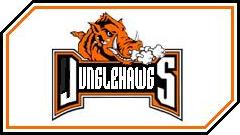 |
|
|
Dallas needed to improve in every area—QB, WR unless two or more of their young wideouts can step up, RB because Ahman Green doesn't have more than a couple of seasons left, TE because Daniel Graham isn't exactly fantasy starter material, and let's face it, even the kicking situation needed improvement. Fortunately for them, they had a Rams backup QB (Gus Frerotte), and Denver coughed up two draft picks—this one and a #3 next year—for Frerotte. Dallas then took Gostkowski, the odds-on favorite to be the next starting kicker for the New England Patriots, and who could thus be a better fantasy option than Hall. He demonstrated both accuracy and leg strength in his final season at Memphis, although he'll be going from a relatively warm climate to cold, snowy New England.
|
3.01 Arizona Outlaws — RB Michael Robinson
 |
|
|
Robinson originally wanted to stay a QB, but whenever he ran out of the pocket, he didn't look to see if a receiver had gotten open (so you almost never saw him throw on the run like Vince Young or Ben Roethlisberger). The San Francisco 49ers announced his selection in the NFL as a running back, even though our myfantasyleague.com site says he's a WR. I admit to hoping to nab him, then persuade Todd to recognize him as a RB, after reading that he was doing well at RB in rookie minicamp, but oh, well...
|
3.02 Houston Tethered Swimmers — TE David Thomas
 |
|
|
A big surprise to me, in my opinion, because Thomas has Benjamin Watson and Daniel Graham ahead of him. Bill Belischmuck has turned the Patriot tight end into a multiheaded monster. Not only did he draft Thomas, but he also took Garrett Mills, a tight end/fullback hybrid from Tulsa. Note 5-26-06: I've read that Graham becomes a free agent after this season, and Jeff Rathburn says he's read reports that Benjamin Watson may be looking for big money after this season as well. If he's right, then Thomas' job situation isn't nearly as tough as I thought.
|
3.03 Chicago Blaze — TE Anthony Fasano
 |
|
|
Scouts, Inc. really likes him: "He has the frame to continue to get bigger, as well as the technique and toughness to develop into an efficient all-around blocker in the NFL. Fasano also has the mobility, quickness, hands and instincts to emerge as a reliable short-to-intermediate weapon in the passing game. Despite his lack of elite physical tools, Fasano warrants second-round consideration in the 2006 draft." Fasano has been compared to Mark Bavaro (former New York Giants great from the late '80s) a number of times. Anyway, I didn't just take Fasano for handcuff purposes—I suspect that Jason Witten, who becomes a restricted free agent after 2006, could bolt the 'Boys for big money. All this stuff about Bill Parcells using 2-TE sets is a big smokescreen.
|
3.04 Carolina Convicts — RB Wali Lundy
 |
|
|
Due to injuries and fumbling problems, Lundy didn't live up to his promise in college. Scouts, Inc. tells me to go easy on this kid: "Lundy has been through a lot as a young man. Both of his parents died when he was a child and Lundy, himself, had a near-death experience due to a scar tissue that was blocking his intestines." But when you take out that 113-yard, 4-TD performance against that noted powerhouse called Temple, and his 2005 season stats would have been 461 yards on 125 carries (3.7 ypc). NFL.com's prospect profile offers up a ray of hope: "If he learns to run more aggressively on every snap, consistently lowers a shoulder to deliver a blow to the tackler and picks his feet up better in traffic, he can be a good starting big back in the NFL who can handle carrying a power offense on his back." But that's a big if.
|
3.05 Cleveland Cellar Dwellers — RB Cedric Humes
 |
|
|
Cleveland... where old running backs go to die (Emmitt Smith after 2004, Jerome Bettis after 2005, maybe Curtis Martin after this year). Maybe Humes can change that way of thinking. He's a punishing back with an impressive combination of size and speed, according to Scouts, Inc., and has a good shot to replace Bettis as the Steelers' goal line back. But first, he's got to compete with Fast Willie Parker, Duce Staley and Verron Haynes for touches.
|
3.06 Tampa Bay Meat Goats — WR Demetrius Williams
 |
|
|
Williams has a favorable job situation in Baltimore; his competition for the #3 WR spot is Clarence Moore, who wasn't too impressive last year; and Devard Darling, who has been utterly unimpressive. Williams made his share of tough grabs and big catches while at Oregon, and is a good value pick here.
|
3.07 Baltimore Brown Clowns — TE Dominique Byrd
 |
|
|
Byrd has durability questions (torn knee ligament, 2003; broken kneecap, 2004). He made his share of plays at USC, but now, can he do that in the NFL against faster and tougher linebackers? He has to compete with fellow rookie Joe Klopfenstein for catches, and Klopfenstein is the early favorite.
|
3.08 Houston Tethered Swimmers — PK Tony Yelk
 |
|
|
The Falcons signed Yelk to compete for their placekicker job, vacant because they would rather pay peanuts to an unproven player than $500,000 to Todd Peterson. (To be fair, Peterson is 36 years old and his leg is relatively weak, but he connected on 23 of the 25 field goal attempts he had last year.) Yelk is competing against two other guys, and I wonder why Houston would use this pick on a kicker when they already have three.
|
3.09 Indianapolis Hoosier Daddies — QB Charlie Whitehurst
 |
|
|
Indy didn't get handcuff QBs Kellen Clemens or Brodie Croyle, but Whitehurst is a terrific value pick considering that a couple of years ago, he, not Jay Cutler, was projected to be among the top QBs in the NFL Draft. In terms of size and athleticism, he's comparable to Carson Palmer. But we can't forget his terrible junior campaign (50.7% completion percentage, 17 interceptions), and he still has to prove that he can make better decisions, both in the pocket and when forced out of it. Note 5-27-06: I left out one thing: Whitehurst actually did far better than Jay Cutler at the Senior Bowl.
|
3.10 Denver Devils — QB Bruce Gradkowski
 |
|
|
Another handcuff pick, as the Devils use the Buccaneer quarterbacks as backups to the Ram quarterbacks. Allen Trieu says Gradkowski would do best in a West Coast offense because he's more effective throwing underneath than downfield. Scouts, Inc. says most his throws have been underneath in a spread scheme, raising the concern that he may be a product of the system, but they do like his intangibles, toughness and competitiveness—things that elite QBs in NFL need to have.
|
3.11 New Orleans Peeping Toms — RB Mike Bell
 |
|
|
A bout with pneumonia wrecked his 2005 season. According to NFL Draft Countdown, he's a north-south runner with great vision, but tends to run too upright. Tommy Hartdegen and I were discussing this pick, and I said that Mike Shanahan wised up by not wasting a 3rd-round or higher pick on a back of questionable quality (as they did last year with Maurice Clarett). By taking Clarett with the 100th pick in the 2005 Draft, Shanahan forced Tommy to waste a Round 1 pick on his sorry ass. This time, Bell only costs the Toms a 3rd-round pick.
|
3.12 Tennessee Taz Devils — WR Martin Nance
 |
|
|
81 rec/1107 yds/14 TD in 2005. He missed 2004 with a knee injury, but his 2003 numbers—90 catches for 1,498 yards and 11 TDs—should not be forgotten. Why? His QB back then was one Ben Roethlisberger. I don't know why anyone in the NFL would pick the likes of Cory Rodgers over Nance.
|
3.13 Tampa Bay Meat Goats — WR Skyler Green
 |
|
|
"Green's lack of size and durability concerns will cause him to slip on draft day," - Scouts Inc. I see him as more of a return man and question why, if the Cowboys really needed depth at WR, they didn't opt for someone like Mike Hass, Martin Nance or Hank Baskett III?
|
3.14 Chicago Blaze — PK Josh Huston
 |
|
|
Hey, I need a new backup kicker because Todd Peterson is unsigned, is 36 years old and doesn't have a very strong leg to begin with. And I like Huston's chances because his competition for the Bears' kicking job, Robbie Gould, was just 3-for-8 from 40 yards or more last year.
|
3.15 Arizona Outlaws — WR Jeff Webb
 |
|
|
Webb put up gaudy stats last season at San Diego State (92 receptions for 1,109 yards and 10 touchdowns), and he's certainly got some serious tools (size, 4.40 speed), but according to NFL Draft Countdown, his route running and blocking need to improve. NFL Draft Countdown also says he's known more for his ego than for being a hard worker. All the more reason why the Chiefs should have taken Mike Hass.
|
3.16 Green Bay Ground Hogs — WR Jonathan Orr
 |
|
|
Orr has big-play ability (as previous Wisconsin alumni Al Toon and Chris Chambers have shown) and speed, but he's inconsistent (he had very good seasons as a redshirt freshman and as a senior, but didn't even get 300 yards in his sophomore and junior seasons combined). Sporting News magazine writer Jim Wyatt says it could take Orr a while to grasp Norm Chow's offensive scheme. Be patient, Paul Rush.
|
4.01 Dallas Junglehawgs — WR Brandon Williams
 |
|
|
"Williams will always be limited by his lack of size (just 174 pounds!) in the NFL. He may never be big enough to play the role of an every-down starter... However, Williams is a tough, savvy and reliable receiver with good speed and quickness. We think Williams has enough potential to develop into a playmaking No. 2 or No. 3 receiver who also can contribute as a return specialist." - Scouts, Inc.
|
4.02 Houston Tethered Swimmers — WR Bennie Brazell
 |
|
|
Who in the blue hell is Bennie Brazell? Let's see, the Bengals drafted him in Round 7 as a wide receiver, and he was an Olympic and All-American 400m hurdler. So if the NFL requires their wideouts to run in straight lines and jump hurdles this year, wow, Jeff Rathburn has made me look like a total dunderhead. Why would I even consider Mike Hass over Brazell?
|
4.03 Chicago Blaze — QB Omar Jacobs
 |
|
|
He had an astounding 41 TDs vs. only 4 INTs in 2004, and while he didn't duplicate that last year, a 26/7 ratio is nothing to sneeze at, either. He worked primarily out of the shotgun formation at Bowling Green and, like Philip Rivers a couple of years ago, he has a delivery that may need to be adjusted in order for him to succeed in the NFL. Mel Kiper said back in January that Jacobs projects as a fifth-round pick. That's just where he went. He probably didn't need to come out a year early, but the Steelers didn't mind that too much, so I'll take him here for handcuff purposes. |
4.04 Carolina Convicts — QB Marcus Vick
 |
|
|
Virginia Tech booted him off their football team four months ago after a litany of problems dating back to February 2004 (serving alcohol to underage girls, stomping on the calf of Louisville DL Elvis Dumervil during the Gator Bowl, speeding and driving with a revoked or suspended license, reckless driving and marijuana possession). Afterwards, Ivan Maisel of ESPN.com put it best: "There is a trail of evidence that suggests that Vick can't be bothered with the rules. Virginia Tech president Charles Steger decided that the Hokies will no longer be bothered with Vick." A week later—and just a couple of days after deciding to turn pro—Vick allegedly pulled a gun on three teenagers that were taunting him outside a local McDonald's. Why waste time talking about his upside? |
4.05 Chicago Blaze — WR Mike Hass
 |
|
|
Here's what Richard Cirminello has to say about last year's Biletnikoff Award winner: "Crisp routes, reliable hands and clutch receptions. Hass adjusts well to deep balls and just doesn’t make mistakes, which compensates for any athletic shortcomings." Sounds like a good #2 receiver to me. Ciriminello thinks of Hall of Famer Steve Largent, and so do I. Consensus Draft (condraft.com) likens him to Donald Driver. Hass was the first receiver in Pac-10 history to post three 1,000 yard seasons. He also set conference records for most receiving yards in a season (1,532) and a single game (293). If that isn't enough, in front of Hass are Joe "Off tha Hizzle" Horn (who is no spring chicken at 34) and Donte Stallworth (who may be headed out of Louisiana within the next year). Bryant Johnson, you are officially on the trading block.
|
4.06 Tampa Bay Meat Goats — WR Brad Smith
 |
|
|
Smith must have understood what Scouts, Inc. (among others) said about his limited understanding of what it takes to be a pocket passer in the NFL and lack of arm strength, and made the switch to WR. As a wideout, he's still a work in progress, a reminder that as good an athlete as Smith may be, there's no guarantee that he'll have the same degree of success as Antwaan Randle El has had. But Paul Granholm hopes that one of Smith's new teammates, 2005 pick Matt Jones, can show him the way.
|
4.07 Denver Devils — QB/WR Reggie McNeal
 |
|
|
Another dual-threat (run and pass) QB. "Write this down," said NFL evaluator Dan Shonka of Ourlads.com, a former scout with three NFL teams, to the Austin American-Statesman. "Reggie McNeal will be a better pro quarterback than Vince Young. Vince is a good athlete, but he could be a $50 million mistake." We'll never find out if Mr. Shonka is right, though, when the Bengals plan to convert him to a wideout. Why should they bother, when they already plenty of depth at wide receiver?
|
4.08 Pittsburgh Big Papas — WR Marques Hagans
 |
|
|
Yet another converted quarterback. Lack of size (5'9") and speed (4.67, according to NFL Draft Countdown) are factors against him. The St. Louis Rams see him as a return specialist. Oh, well. This is the middle part of the fourth round, what do you expect?
|
4.09 Baltimore Brown Clowns — RB DonTrell Moore
 |
|
|
Moore tore his ACL in the 2004 Emerald Bowl, and worked hard to come back for 2005. Scouts, Inc.: "He is a tough, powerful runner with great vision and body control. Durability is a major issue." NFL.com's prospect profile says he simply is not going to be a good starting RB—more like a 3rd-down back.
|
4.10 Denver Devils — WR Hank Baskett III
 |
|
|
Sporting News magazine said he hurt his stock at the Senior Bowl. He's got tools—speed, leaping ability (he's the 2004 Mountain West outdoor high jump champion), hands—but is a relatively raw prospect. A recent trade to the Philadelphia Eagles helps him. It's actually a better situation; in Minnesota, he would have been stuck behind Troy Williamson, Koren Robinson, Marcus Robinson and Travis Taylor; with the Eagles, his competition is Greg Lewis, Jabar "Danger Prone" Gaffney, and Todd Pinkston (with Reggie Brown as the de facto "#1" receiver).
|
4.11 New Orleans Peeping Toms — WR Domenik Hixon
 |
|
|
Hixon was a defensive back at Akron as recently as 2003, but switched to the offensive side of the ball the next year and quickly became Charlie Frye's #1 target. His numbers improved in 2005 (75 rec/1210 yds/8 TD, including the Motor City Bowl). The Denver wideout corps is crowded; although Rod Smith is getting up there in age and Ashley Lelie is bitching his way out of town, there's still David Terrell, Darius Watts and fellow rookie Brandon Marshall to contend with.
|
4.12 Cleveland Cellar Dwellers — RB Gerald Riggs Jr.
 |
|
|
Listen closely, Campbell Rathburn, and Tessa and Hannah Hansen: This is not your father's Gerald Riggs. Gerald Riggs Sr. was a bruiser of a RB for several years with the Falcons and Redskins, including a few years when he would have been a fantasy starter because of all the TDs he racked up (1984-86). The younger Riggs, however, only had 9 touchdowns in his college career, and missed the second half of 2005 with an ankle injury.
|
4.13 Dallas Junglehawgs — WR Cory Rodgers
 |
|
|
Rodgers is a threat to go all the way every time he touches the ball... but only as a kick or punt returner. I don't know why any NFL team would spend such a high draft pick (in the Packers' case, a 4th-rounder) on a kick returner, when the lot of those guys are undrafted (Eddie Drummond, Lions; B.J. Sams, Baltimore). Heck, one of the best return men ever—Mike Nelms of the Washington Redskins' early-'80s teams—was imported from the CFL.
|
4.14 Dallas Junglehawgs — RB Derrick Ross
 |
|
|
My first impression of him was, "Who???" It turns out that he's from a small college called Tarleton State. According to NFL Draft Countdown, Ross is a very raw prospect with questionable work ethic and character and is comparable to Derrick Ward (who got to stick with the Giants, but only as a kick returner, and nothing more). I realize the Chiefs don't have much at RB beyond Larry Johnson and aging Priest Holmes, but there's Michael Bennett, or Vernand Morency if the stupid Texans trade for Bennett...
|
4.15 Arizona Outlaws — TE Owen Daniels
 |
|
|
The Houston Texans may use Daniels as an H-back (a la Frank Wycheck back in his day with the Titans, Chris Cooley with the Redksins today). The risk is in his left knee—he tore the ACL in that knee twice, once in high school, the second time in 2002. But considering that Cooley (and Wycheck before him) have proved to be serviceable in the fantasy realm, there's a chance Daniels could, too.
|
4.16 San Diego Slewage — RB Taurean Henderson
 |
|
|
The Slewage goes for another member of his favorite team, the Minnesota Vikings. Henderson has "passing down back" written all over him, but Mewelde Moore has that job right now (assuming that Chester Taylor is the starter). Training camp and preseason games will be the acid test to determine if Henderson is as good as his stats, or if those stats were a product of his playing in Texas Tech's spread offense.
|
















































